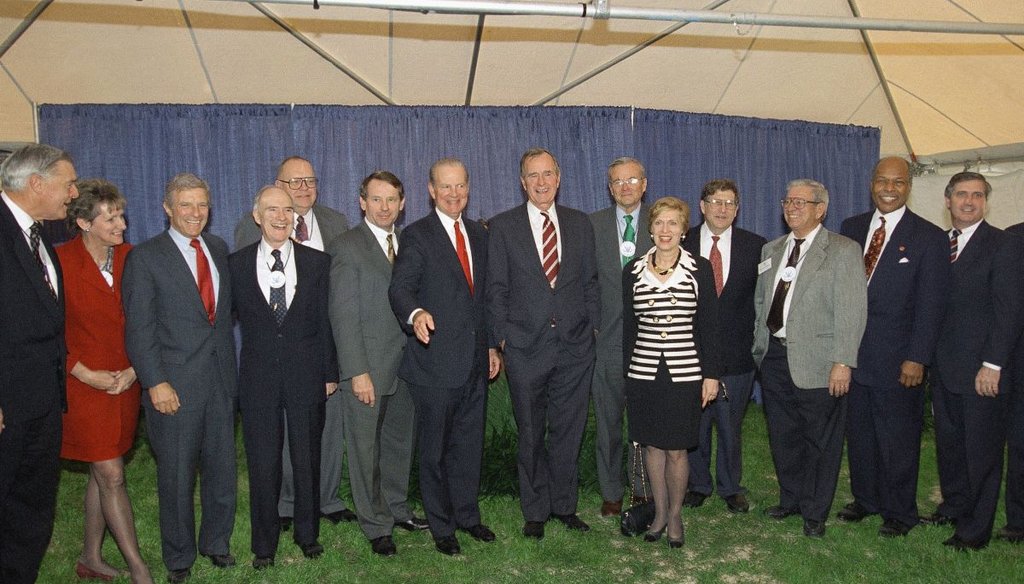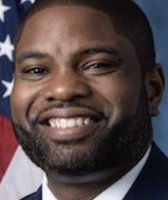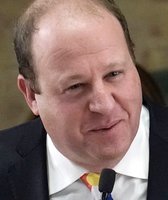Stand up for the facts!
Our only agenda is to publish the truth so you can be an informed participant in democracy.
We need your help.
I would like to contribute

Former President George H. W. Bush poses with former cabinet members after a groundbreaking ceremony for Bush's presidential library and museum on Nov. 30, 1994 in College Station, Texas. At the time, his papers were in a converted bowling alley. (AP)
If Your Time is short
• Former President Donald Trump mocked the late President George H.W. Bush for having his presidential papers sorted in a converted bowling alley and Chinese restaurant. But that distorts what happened with Bush’s papers.
• Presidential papers often are taken to large, repurposed facilities, where they remain for years to allow for sorting and cataloging before buildings housing their presidential library and museum are ready for occupation.
• Unlike what appears to have happened with the papers Trump took to his Mar-a-Lago resort, the Bush paper sorting was done with the full cooperation of the National Archives and using standard procedures for security and limiting access to classified material.
Former president Donald Trump told crowds in Nevada and Arizona that his handling of presidential documents was praiseworthy compared with that of George H.W. Bush, who died in 2018.
In his Oct. 8 rally in Nevada, Trump melded references to the former president, a bowling alley, and a Chinese restaurant in an effort to downplay the security concerns that prompted the FBI to search Trump’s Mar-a-Lago resort for government documents that Trump took from the White House.
"George H.W. Bush took millions of documents to a former bowling alley and a former Chinese restaurant where they combined them," Trump said. "So they're in a bowling alley slash Chinese restaurant. By contrast, I had a small number of boxes and storage at Mar-a-Lago, very small, relatively guarded by the great Secret Service."
Trump echoed this comment during a rally the following day in Arizona, saying that the 41st president "took millions and millions of documents to a former bowling alley, pieced together with what was then an old and broken Chinese restaurant. They put them together. And it had a broken front door and broken windows." Trump then added sarcastically, "Other than that it was quite secure."
Former Florida Gov. Jeb Bush, son of the 41st president and brother to the 43rd, responded on Twitter, saying, "I am so confused. My dad enjoyed a good Chinese meal and enjoyed the challenge of 7-10 split. What the heck is up with you?" (For bowling newbies, a 7-10 split is a particularly challenging positioning of the pins.)
So what’s going on here?
It turns out that Trump is on solid ground about the location of the facility in Texas where Bush’s presidential papers and possessions were sorted before his presidential library was built.
However, Trump’s ridicule of the facility’s security standards was unfounded, as was his implication that it was similarly deserving of the kind of federal search carried out at Mar-a-Lago.
The early 1990s episode involving Bush’s presidential papers was largely forgotten until recent days, but it received a modicum of media attention at the time.
An Associated Press dispatch that was reprinted in newspapers around the country in June 1994 documented what happened to Bush’s papers from the time he left the White House in January 1993 to the 1997 opening of the George H.W. Bush Presidential Library and Museum at Texas A&M University in College Station, Texas. Here’s how the AP article began:
The stuff of George Bush’s life — an old infielder’s mitt, the door of a Kuwaiti palace, even a huge likeness of Bush’s head from a Republican convention — is being sorted in an old bowling alley.
Of course, there’s not enough room in the old Chimney Hill Bowl for 36 million pages of documents, a million photos and 40,000 objects. So some of it is crammed next door, in what used to be the kitchen of a Chinese restaurant.
Someday, this will be the treasure of the George Bush Presidential Library and Museum at Texas A&M; University. But for now, it’s just pile upon pile of Bush fodder for the archivists.
"Our job is to preserve, arrange and review and ultimately try to make as much available as we can to the American people,’ said David Alsobrook, acting director of the Bush Presidential Materials Project.
Alsobrook — who had previously worked for a decade at the Jimmy Carter Presidential Library in Atlanta — told the AP that he was working with 10 researchers from the National Archives to catalog and organize material that was expansive enough to fill four C-5A cargo planes.
Alsobrook, who died in 2021, seemed to enjoy discussing the incongruity of the important government documents being sorted at a converted bowling alley and Chinese restaurant.
In an interview for the book "A Noble Calling: Character and the George H.W. Bush Presidency," Alsobrook said, "After living in a bowling alley for the last four years, I can tell you this: Our staff is really looking forward to moving into the new building." He also recalled making a point to reporters that the facility included a former Chinese restaurant, rather than just a bowling alley.
The Bush library did not respond to an inquiry for this article. But the National Archives sent a statement to PolitiFact that said that "reports that indicate or imply" that the presidential records of George H.W. Bush or other past presidents "were in the possession of the former presidents or their representatives after they left office, or that the records were housed in substandard conditions, are false and misleading."
However, Robert Holzweiss, deputy director of the Bush library and a member of the team that worked at the former bowling alley and Chinese restaurant, told People magazine earlier this year that it has been common for presidential library staffers to convert seemingly unusual venues into transitional spaces as the final building is being constructed.
Ronald Reagan's were housed in an old pasta factory, he said. Bill Clinton's were taken to a former used-car dealership, while Barack Obama's went to a former furniture store.
"It's rare to find one that can store such a voluminous trove of paper," he told the magazine. "So archivists and museum staffers have to get creative."
Holzweiss said that once the alleys were removed and the floors smoothed at the College Station complex, "it was perfect, it was like a warehouse. They just built a secure space within to house the classified material."
Although the converted space in College Station may sound silly on first hearing, it was not some shoddy facility with broken doors and windows.
"Uniformed guards patrol the premises," the AP article noted. "There are closed-circuit television monitors and sophisticated electronic detectors along walls and doors. Some printed material is classified and will remain so for years; it is open only to those with top-secret clearances."
By comparison, Trump’s Mar-a-Lago resort in Palm Beach, Florida, had a steady stream of club members, guests and wait staff streaming through.
More important, experts say, is the context in which the documents were brought to the two locations. Put simply, the operation for the Bush papers was conducted according to standard procedures, with the National Archives fully involved. Trump’s was not.
"There's a big difference between having records in a facility managed by the National Archives, even if it is a rented facility, and having records in a private residence," said Benjamin Hufbauer, an associate professor of art history at the University of Louisville and an expert in presidential libraries.
Bradley Moss, a Washington, D.C.-based lawyer who works on national security cases, agreed that the Bush process was far different, and more proper, than what happened at Mar-a-Lago.
"The two situations are completely distinct," he said. "Bush’s setup was run by the National Archives and had security procedures set in place by the government, not by Bush. Trump hid hundreds of thousands of pages from NARA, and the Secret Service had no insight into the fact the documents were even on location."
UPDATED, Oct. 11, 2022: This version includes a statement from the National Archives and Records Administration that was received after publication.
Our Sources
Donald Trump, comments at a rally in Nevada, Oct. 8, 2022
C-SPAN, Trump rally in Nevada, Oct. 8, 2022
Jeb Bush, tweet, Oct. 9, 2022
The Associated Press, "Bush Library team plays first inning in bowling alley : History: Yale baseball glove, gifts from foreign governments, documents, and old furniture from the ex-president’s childhood are included. Officials are preparing for museum’s opening in 1997," June 26, 1994
Insider, "Trump said former President George H.W. Bush kept secret government documents in a combination bowling alley and Chinese restaurant and should be investigated. Bush died in 2018," Oct. 9, 2022
People magazine, "A sick boy’s gift to Barbara Bush and a wartime letter to the kids: Discoveries in a presidential archive," Feb. 4, 2022
Google Books, "A noble calling: Character and the George H.W. Bush Presidency," accessed Oct. 10, 2022
Email interview with Bradley Moss, Washington, D.C.-based lawyer who works on national security cases, Oct. 10, 2022
Email interview with Benjamin Hufbauer, associate professor of art history at the University of Louisville and an expert in presidential libraries, Oct. 10, 2022


































